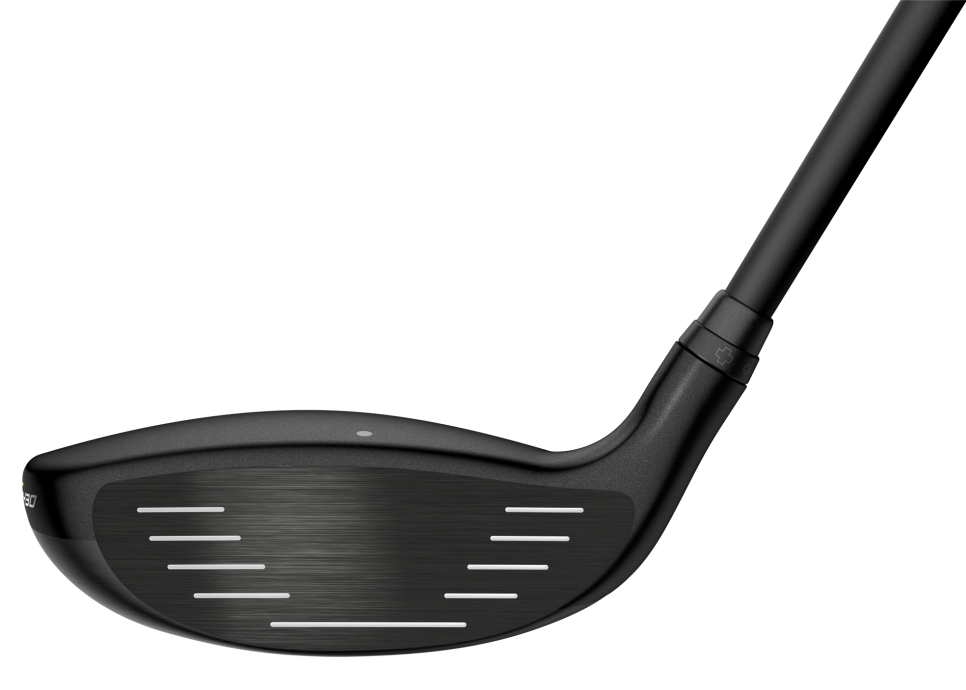WHAT YOU NEED TO KNOW: The new Ping G430 LST fairway wood, which has been available for the company’s tour staff for a few months, gets its full public release today, and high swing speed players should take notice. Its unique multimaterial construction, which includes a titanium body, a wraparound beta titanium face, a heavy tungsten sole and a lightweight carbon composite crown, is aimed directly at lowering the head’s centre of gravity for a more efficient transfer of energy at impact and a lower-spinning flight.
PRICE/LOFT: $995. Loft: 15 degrees, adjustable by +/- 1.5 degrees.
3 COOL THINGS
1. Tour qualities. If you’re going to make a fairway wood that targets elite players, Job 1 is doing everything possible to lower the centre of gravity. Fast swingers risk launching their 3-woods to high with too much spin and that saps distance potential. Conventional all-steel construction fairway woods can get the CG only so low. The G430 LST first saves weight by replacing all the steel on its G430 Max and SFT fairway woods with two kinds of titanium. There’s the cast Ti 8-1-1 body and then that’s fronted by a wraparound 2041 beta titanium face that’s built for extra flexibility. Further weight is saved by a carbon composite crown similar to the other G430 fairway woods. All that saved mass allows the G430 LST to include an 80-gram tungsten sole plate. The net effect is pushing the position of the CG so it more closely lines up with a line that runs through the head and perpendicular to the centre of the face. Said Ryan Stokke, Ping’s director of product design, “Going to titanium gives us an immediate high amount of discretionary mass to work with and then we can allocate where we really want that weight to go. We’re really targeting getting that CG down and getting it to an integral position for high swing speed players without sacrificing how that design can better suit the overall performance. This was a deliberate direction for us to produce the best fairway wood for our tour players and high swing speed players.”
.png.rend.hgtvcom.966.1352.suffix/1687273018325.png)
2. MOI isn’t everything. Come again? Ping invented the idea of pushing the limits of moment of inertia in all golf clubs decades ago. (Moment of inertia is a physical property that reflects how stable a head is on off-centre hits, and is generally a way to measure forgiveness.) But the G430 LST fairway woods actually reflect a focus on gently reducing MOI in the pursuit of better overall performance. Said Stokke, “We’ve always had very forgiving fairway woods but allowing the MOI to come down a little bit as a static measurement but still get the CG in a better place is actually going to lead to better dispersion on the golf course.” Stokke said a big key has been Ping’s R&D efforts in developing simulations that allow engineers to tweak variables to see how the give-and-takes might lead to sacrifices that aren’t, as it turns out, sacrifices. “We can show in a simulation that a 10-percent reduction in MOI but an improvement in the CG to this location is a direct trade-off that will lead to tightening dispersion because of the efficiency of impact,” he said. “MOI isn’t everything but MOI balanced with proper CG location can lead to even better dispersion. And that’s really what we want to measure.”

3. Face facts. The G430 LST also employs a secondary spin reducing feature that also debuted with the G425 fairway woods. Designed to produce more consistent spin across the face, the lower part of the face features less roll. By reducing loft on the lower part of the face and combining it with the lower CG, shots launch and maintain their flight with more consistency. It’s also allowed the G430 LST to have a half-degree higher loft (15 degrees) than past models. Said Stokke, “A CG that low for players that hit low on the face really produces a different feeling. It feels like you flush every shot. And there’s a positive reinforcement aspect to that, as well.”



